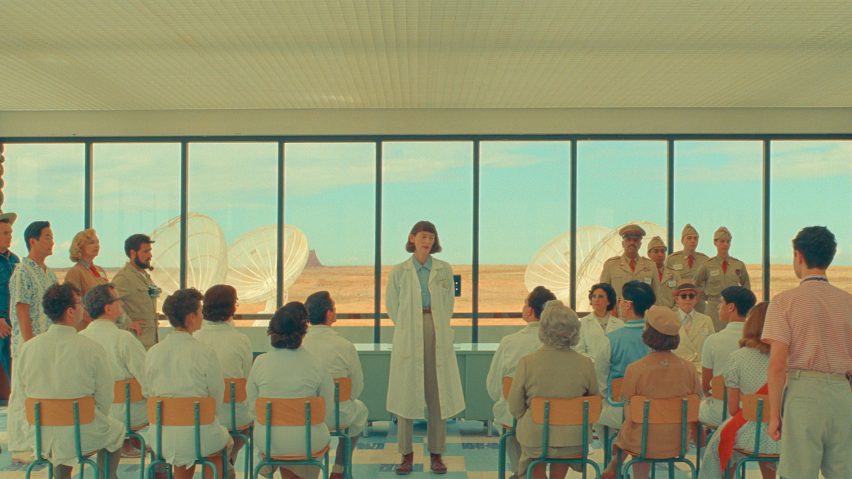
"We built the entire town and landscape" says Asteroid City production designer
The set for Wes Anderson's latest film Asteroid City was designed and built as a functioning town complete with underground power and sewers, production designer Adam Stockhausen tells Dezeen in this interview.
Set in 1955, the film largely takes place in the fictitious desert town of Asteroid City, famous for its meteor crater and celestial observatory.
A 1950s-style luncheonette, a gas station, a motel made up of 10 white cabins and a telephone booth populate the rest of the town.
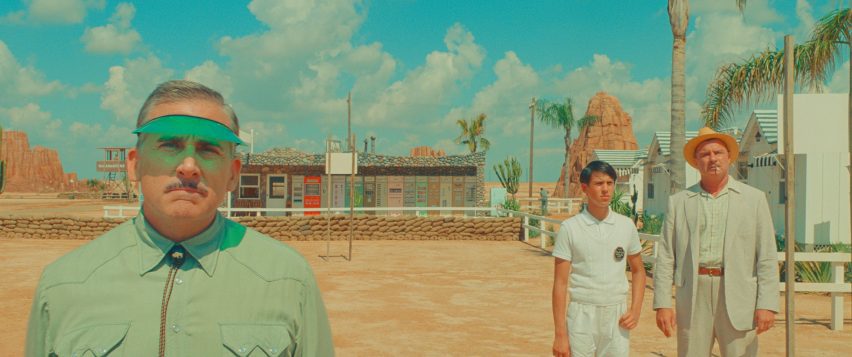
Filmed on flat farmland in Spain, the Asteroid City set was built from scratch, including underground power and plumbing infrastructure.
"We took [the farmland] over and built the entire town and the entire landscape that you see, which is sort of an unusual thing to do on a film, and it was a tonne of fun," Stockhausen told Dezeen.
"We ended up doing underground engineering work to bring in power, plumbing and sewers so that the place functioned as the city, rather than just being a set that was dependent on infrastructure elsewhere," he continued.
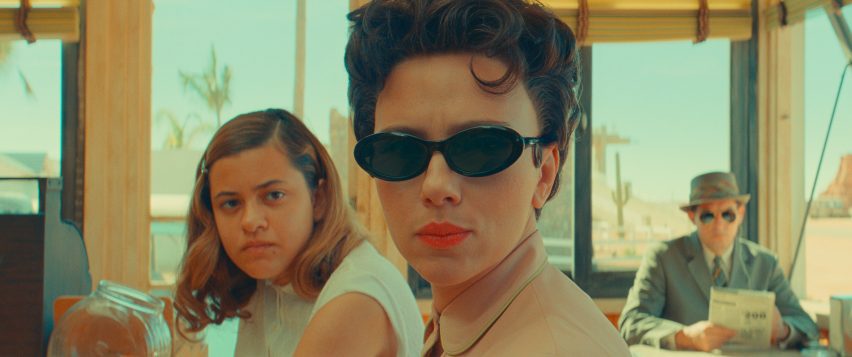
The site, just outside of Madrid, was chosen because it provided a vast-looking landscape with a "clean horizon" while also being close to city amenities for the film team.
"We could have the rural quality that we needed, but also the benefits of the big city," said Stockhausen.
As well as building the entire set, the production team created a red desert landscape stretching around half a mile.
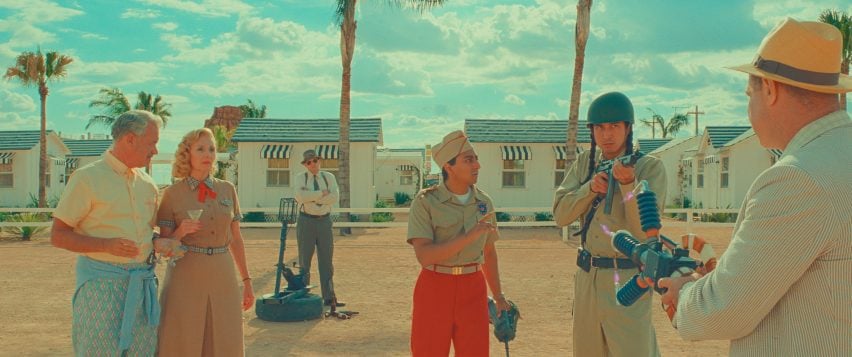
According to Stockhausen, the red colour of the ground was an important design decision from the early concept stages.
"Wes will have a big colour idea at the beginning of every film process, which will be a bold gesture starting from the very first sketch and carrying all the way through to the end of the film," explained Stockhausen.
"The very first sketch we were working on [for Asteroid City] was the luncheonette surrounded by the desert," he added. "For the very first drawing, I had a more brown kind of dirt in the desert and he was like, no, the desert is red, almost Mars red."
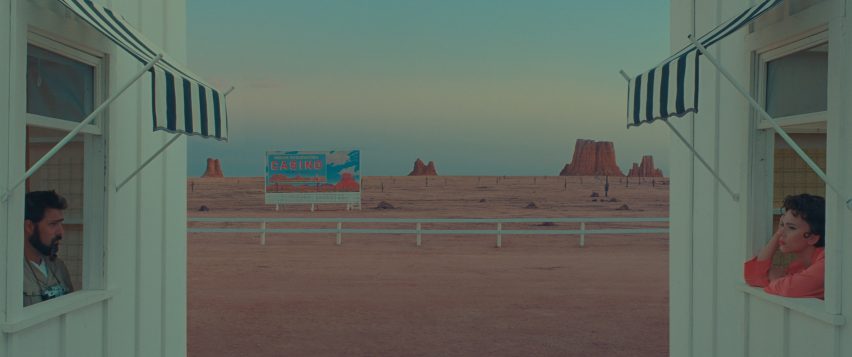
Red dirt from a nearby quarry was transferred to the site to achieve the Mars-like desert landscape.
"We started looking around for samples of what kind of super red dirt can we get and how much it would cost to import a tennis-court clay," said Stockhausen.
"At the end of the day, we found a quarry so close you could have walked there. We looked at all the different rocks they had and picked the reddest one."
"We put it on the site ground and in the sunlight it was a magnificent pinkish red, and it came from right next door," the production designer added.
After filming wrapped, all the infrastructure was removed and the site returned to farmland.
"Our deal with the farmers was that we would return the place to them in exactly the condition that we found it," said Stockhausen.
"It was really important for us to take a lot of care as we left so we weren't damaging anything and it could go to being farmed the next year."
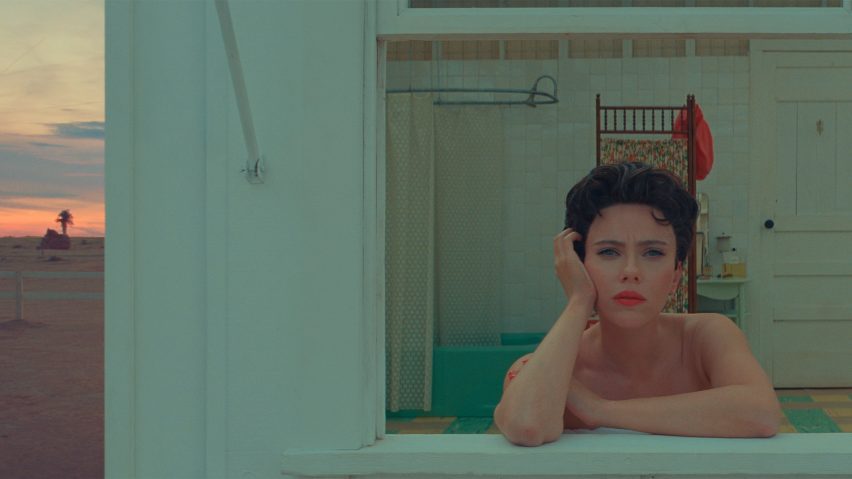
Every shot in the Asteroid City movie was planned and tested in a digital model before the set was built.
"We designed the set in a computer first as a 3D model to get the spatial relationships correct," said Stockhausen. "Because this an open town, there was no way to reset the whole thing in between shots."
"We had a camera inside the computer model that was doing the exact same things [Anderson] was describing in the storyboards, and we were able to proof of concept every single shot to make sure that it worked."
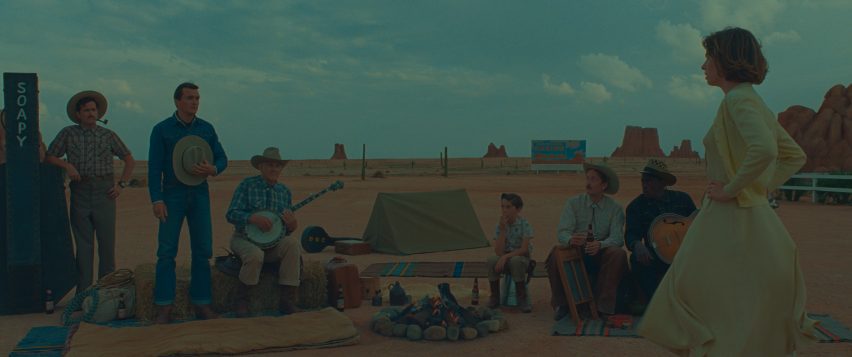
Stockhausen pulled inspiration from details in old photos when designing the 1950s-style scenery to create a town that appeared based in reality, yet maintains a fictional quality.
"I think there is a strong amount of reality as the details are found in real things, but it's heightened in two ways – it's an assembly of all these great details in one place so it has a distinct quality of its own, but then in a second way Asteroid City isn't a real place, it's a set in a play," he explained.
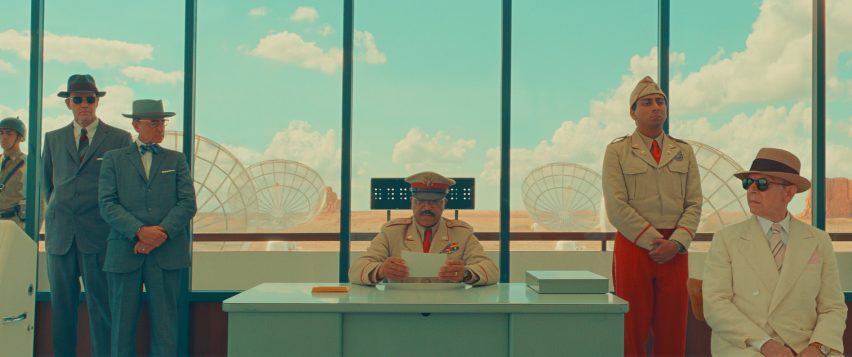
"The landscape is not like any location – it's not like we went to a real desert like the Monument Valley in the US and set up our cafe and gas station," Stockhausen continued.
"It was more appropriate to build the whole thing from scratch and to build the landscape that you see outside of town as well, and for it to have that slight quality of a set."
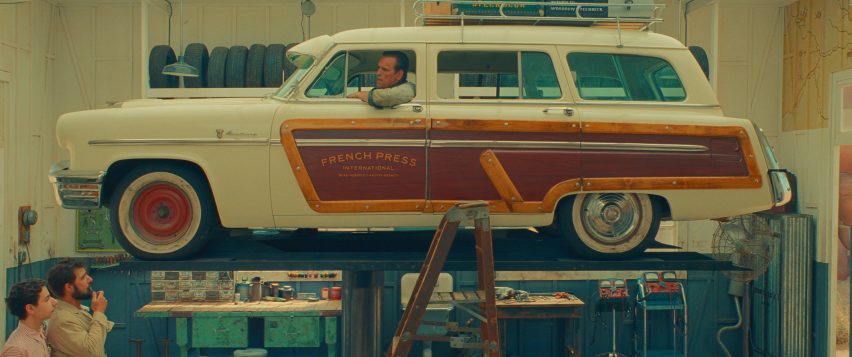
Stockhausen reflected on his favourite part of the film – the scene where the fictional town of Asteroid City is introduced and most of the set is seen in one continuous sequence, commenting "it's funny to work on something for so long and to see it all in one shot".
"The first shot in Asteroid City where the train goes by and we turn to look at the luncheonette, and then we slide over and look at the motel, and then we turn again – it was so wonderful to do and so satisfying."
To coincide with the Asteroid City's release, London's 180 The Strand hosted an exhibition of sets, props, miniature models, costumes and artwork featured in the film.
Dezeen recently rounded up eight retro interiors that embody the distinctive cinematic aesthetic of Wes Anderson, including a makeup store designed to look like 1970s offices and a cafe in Milan designed by Anderson himself.
The images are courtesy of Pop 87 Productions/Focus Features.
Dezeen In Depth
If you enjoy reading Dezeen's interviews, opinions and features, subscribe to Dezeen In Depth. Sent on the last Friday of each month, this newsletter provides a single place to read about the design and architecture stories behind the headlines.